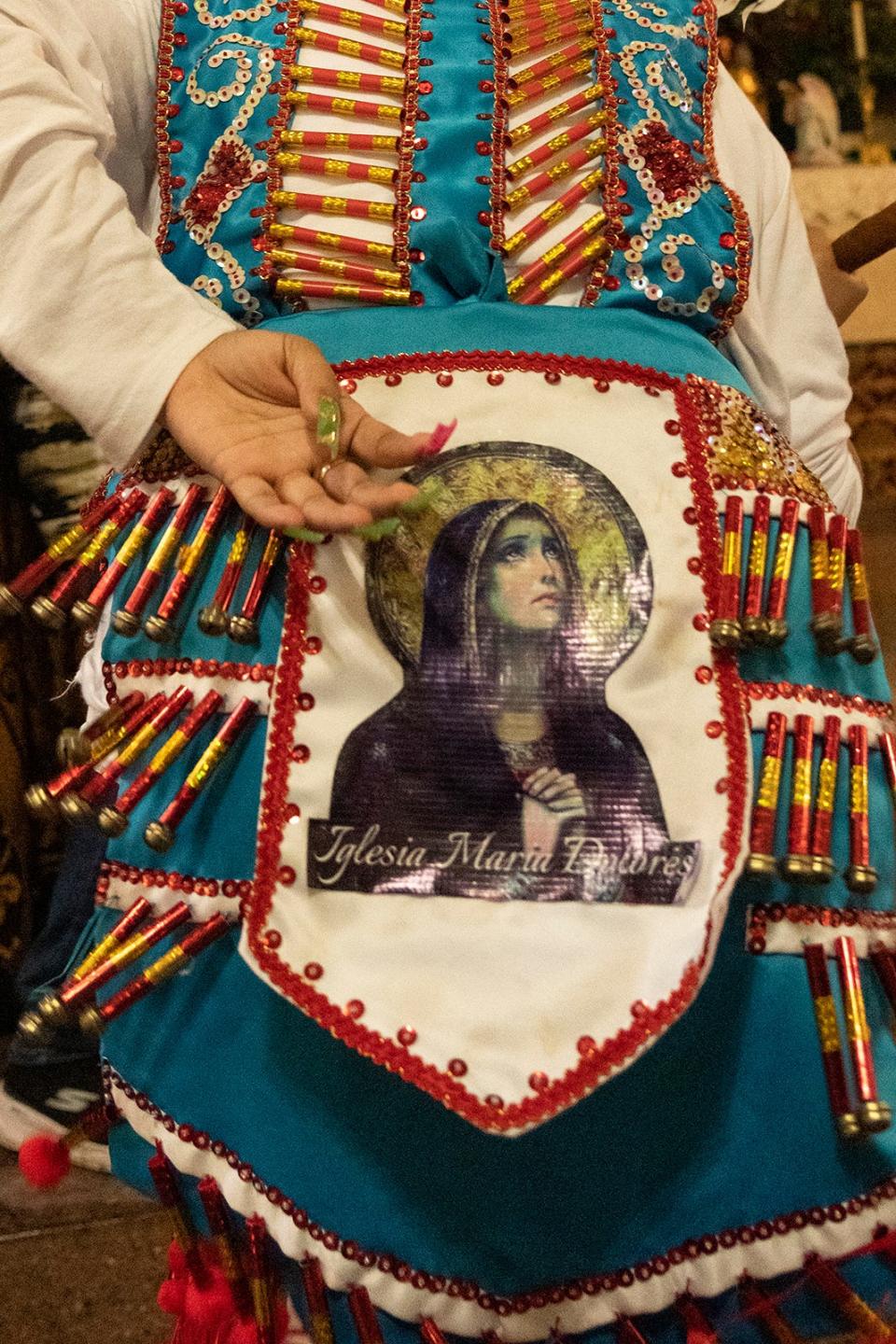Faith: Stories of Hanukkah, Virgin Mary and questions they bring
- Oops!Something went wrong.Please try again later.
- Oops!Something went wrong.Please try again later.
I must admit, my feelings oysmishn when it comes to Mary, the mother of Jesus. The onomatopoetic Yiddish expresses this “mix up” or “blend” best. Not that I have anything but respect for the woman who bore the one so many for centuries have called Lord and Savior.
My Presbyterian orientation, however, places Jesus alone in the category of “divine,” relegating the rest of us to an odd suspension of saint and sinner. My Catholic root nutrients, which were funneled through a mother and Sister of St. Joseph aunt, who embraced a special devotion to Our Lady, register a hesitancy to dethrone this Madonna. The fact Christianity has proven itself a patriarchal institution with few female icons, further agitates my quandary. I’m reluctant, therefore, to pronounce the Blessed Mother any less blessed.
That said, the immaculate conception proves a stretch for me. That’s not to deny, however, its significance as a theological construct. If one contends Jesus is sinless, the doctrine posits, then the “vessel” from whom he emerges must by necessity be sinless. The doctrine of the virgin birth rests on a similar argument. Bottom line: the messiah cannot be “conceived in sin,” which is another way of saying “through sex,” but that’s another discussion. Such contortions of logic, nevertheless, do not reflect the Jewish world Jesus came into.

The first day of an eight-day Jewish season overlaps in December with the Feast of the Immaculate Conception. Hanukkah fails to fit with the cultural world of Jesus’ conteporaries. It is after all a minor Jewish holiday that came to prominence because of its proximity to Christmas. Did Mary or Jesus light a menorah? Doubtful. Some scholars even suggest that the story behind this Jewish holiday proves as mythical as the narrative depicting Jesus’ mother as immaculately conceived as him.
Some scholars contend that the followers of Judas Maccabee, for whom these books named — those portrayed as heroes in the story of the lamp oil that endured for eight days — were, in fact, violent zealot extremists. These Jews took up arms to resist the Hellenistic trend, blending the language and socio-political systems of Greeks and Romans with Jewish traditions — an oysmishn that some insist helped Judaism survive.
I must admit here to another oysmishn. Growing up very Catholic in a very Jewish neighborhood has left me with a blended perspective. Still, I question the mythos of each religion. Was Mary in fact “conceived without sin”? Did the temple lantern truly burn for eight entire days sans oil (the story upon which the Festival of Lights is based)?

If we answer “no,”, can we briskly sweep away the hope generated by the traditional tales we tell within our faith communities for the sake of “sticking to the facts”? Does not the idea of a God that cannot be personified still require at least one enduring image of divinity that is feminine?
It’s left to all of us to answer these questions individually but also on a broader cultural level. Might we not begin by conceding that none of us have a monopoly on truth? Might we not start from there with a conversation that, while not requiring us to surrender all beliefs that have imbued life with meaning, pries itself open to listen to and to value alternative perspectives?
Members of my family, often with smiles on our faces, quote Eloise Love, a tall dignified Black woman from the congregation I served as pastor in Oakland, California. Mrs. Love, dressed to the nines and with a conspicuous hat to match, occupied her usual spot in the front pew of High Street Presbyterian Church every Sunday. I watched some of that dignity ware away over the months I brought her to her dialysis appointments before she died. Even then, she walked her talk when advising us after our intense congregational disagreements. Resolution could only come if we did what she routinely insisted: “Give it to God, sweetie; give it to God!”
Even if one does not believe in God, one cannot deny, when reaching an impasse during our hot exchange of convictions, the prudence of stopping and surrendering to a belief that our differences just might resolve in the silence that follows — in our quiet admission that no one person or group has all the answers.
Isn’t faith more about acknowledging that ours is not the last word than it is unadulterated adherence to doctrine or unquestioning belief in a story. Like Mary’s “yes” in her Magnificat —“yes” to taking part in a dubious divine plan to rescue humanity, our “letting go” of whatever got us into an argument about doctrine, politics or whatnot might lead to an imperfect, but nonetheless blessed, reception of the unknown.
This is by no means a directive to be passive. After all, does it take less muscle to be kind than it does to be right?
For many this “most wonderful time of the year,” particularly this year, proves anything but. These folks don’t need the suggestion that miracles fail to occur or that their behavior along with everyone else’s will always fall short of “sinless.”
My family will light the first candle of a menorah in solidarity with all Jews experiencing anxiety after the attacks in Israel. Recent events make that now inhabited land feel less promising… for Jew and Palestinian alike.
In the words of both Jeremiah and Matthew, “Rachel is weeping.” As our candle burns, I will also picture Mary, surrounded by mothers in Gaza and Israel — all weeping along with Rachel for their children.
I invite your families to light a candle as well. Let’s make it a holiday season generous toward those with whom we disagree — toward those we don’t even know. As to what gets in the way of this, let’s give that to God.
Terry Dawson is an ordained Presbyterian minister and former adjunct faculty member of San Francisco Theological Seminary.
This article originally appeared on Austin American-Statesman: Faith: Hanukkah and Virigin Mary

